Mark Doty at The Paris Review:
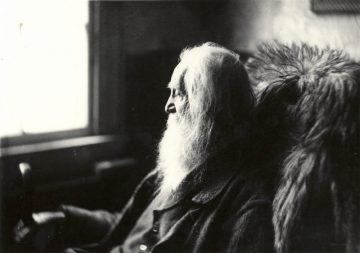 There are poets who find their strength in brevity, who use as few words as possible, arranged in the minimum number of lines, to evoke sense perception, emotion, and idea. Walt Whitman, it goes without saying, is not one of those. He is most comfortable on a broader scale. His great poems—“Song of Myself,” “The Sleepers,” “Crossing Brooklyn Ferry,” “Out of the Cradle Endlessly Rocking,” and “When Lilacs Last in the Dooryard Bloomed”—straddle hundreds of lines, providing the poet with room to catalogue particulars (The glories strung like beads on my smallest sights and hearings, he calls them), to stack up parallel statements, to address his reader, to depart from and return to his argument, and to construct a kind of poetic architecture designed to be mimetic of the process of thinking, and thus draw us more intimately near. This is why his shorter poems often feel like parts of a larger, more encompassing one; even satisfyingly complete shorter pieces such as “To You” and “This Compost” might be seen as outtakes, or gestures in the direction of some overarching intention.
There are poets who find their strength in brevity, who use as few words as possible, arranged in the minimum number of lines, to evoke sense perception, emotion, and idea. Walt Whitman, it goes without saying, is not one of those. He is most comfortable on a broader scale. His great poems—“Song of Myself,” “The Sleepers,” “Crossing Brooklyn Ferry,” “Out of the Cradle Endlessly Rocking,” and “When Lilacs Last in the Dooryard Bloomed”—straddle hundreds of lines, providing the poet with room to catalogue particulars (The glories strung like beads on my smallest sights and hearings, he calls them), to stack up parallel statements, to address his reader, to depart from and return to his argument, and to construct a kind of poetic architecture designed to be mimetic of the process of thinking, and thus draw us more intimately near. This is why his shorter poems often feel like parts of a larger, more encompassing one; even satisfyingly complete shorter pieces such as “To You” and “This Compost” might be seen as outtakes, or gestures in the direction of some overarching intention.
more here.

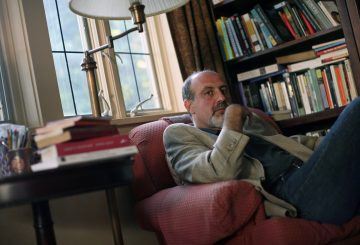 Nassim Nicholas Taleb is “irritated,” he told Bloomberg Television on March 31st, whenever the
Nassim Nicholas Taleb is “irritated,” he told Bloomberg Television on March 31st, whenever the  When a young girl came to New York University (NYU) Langone Health for a routine follow-up, tests seemed to show that the medulloblastoma for which she had been treated a few years earlier had returned. The girl’s recurrent cancer was found in the same part of brain as before, and the biopsy seemed to confirm medulloblastoma. With this diagnosis, the girl would begin a specific course of radiotherapy and chemotherapy. But just as neuropathologist Matija Snuderl was about to sign off on the diagnosis and set her on that treatment path, he hesitated. The biopsy was slightly unusual, he thought, and he remembered a previous case in which what was thought to be medulloblastoma turned out to be something else. So, to help him make up his mind, Snuderl turned to a computer.
When a young girl came to New York University (NYU) Langone Health for a routine follow-up, tests seemed to show that the medulloblastoma for which she had been treated a few years earlier had returned. The girl’s recurrent cancer was found in the same part of brain as before, and the biopsy seemed to confirm medulloblastoma. With this diagnosis, the girl would begin a specific course of radiotherapy and chemotherapy. But just as neuropathologist Matija Snuderl was about to sign off on the diagnosis and set her on that treatment path, he hesitated. The biopsy was slightly unusual, he thought, and he remembered a previous case in which what was thought to be medulloblastoma turned out to be something else. So, to help him make up his mind, Snuderl turned to a computer. When the virus
When the virus Human beings have a strange fascination with dangerous, predatory animals — bears, lions, wolves, sharks, and more. The top of the food chain is an interesting and precarious place to live; while you might be the boss of your local environment, you also depend on the functioning of an entire ecology. Rae Wynn-Grant is a carnivore ecologist who studies how large predators migrate, feed, reproduce — and especially how they interact with humans. We talk about the diverse social structures of different species of carnivores, how they find mates, and how they diversify their diet. And of course we discuss how humans and other locally-dominant species can live together peacefully.
Human beings have a strange fascination with dangerous, predatory animals — bears, lions, wolves, sharks, and more. The top of the food chain is an interesting and precarious place to live; while you might be the boss of your local environment, you also depend on the functioning of an entire ecology. Rae Wynn-Grant is a carnivore ecologist who studies how large predators migrate, feed, reproduce — and especially how they interact with humans. We talk about the diverse social structures of different species of carnivores, how they find mates, and how they diversify their diet. And of course we discuss how humans and other locally-dominant species can live together peacefully.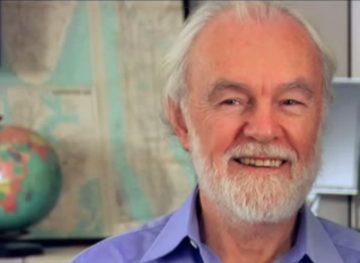 When trying to interpret, understand and analyse the daily flow of news, I tend to locate what is happening against the background of two distinctive but intersecting models of how capitalism works. The first level is a mapping of the internal contradictions of the circulation and accumulation of capital as money value flows in search of profit through the different “moments” (as Marx calls them) of production, realisation (consumption), distribution, and reinvestment. This is a model of the capitalist economy as a spiral of endless expansion and growth. It gets pretty complicated as it gets elaborated through, for example, the lenses of geopolitical rivalries, uneven geographical developments, financial institutions, state policies, technological reconfigurations and the ever-changing web of divisions of labour and of social relations. I envision this model as embedded, however, in a broader context of social reproduction (in households and communities), in an on-going and ever-evolving metabolic relation to nature (including the “second nature” of urbanisation and the built environment) and all manner of cultural, scientific (knowledge-based), religious and contingent social formations that human populations typically create across space and time. These latter “moments” incorporate the active expression of human wants, needs and desires, the lust for knowledge and meaning and the evolving quest for fulfilment against a background of changing institutional arrangements, political contestations, ideological confrontations, losses, defeats, frustrations and alienations, all worked out in a world of marked geographical, cultural, social and political diversity. This second model constitutes, as it were, my working understanding of global capitalism as a distinctive social formation, whereas the first is about the contradictions within the economic engine that powers this social formation along certain pathways of its historical and geographical evolution.
When trying to interpret, understand and analyse the daily flow of news, I tend to locate what is happening against the background of two distinctive but intersecting models of how capitalism works. The first level is a mapping of the internal contradictions of the circulation and accumulation of capital as money value flows in search of profit through the different “moments” (as Marx calls them) of production, realisation (consumption), distribution, and reinvestment. This is a model of the capitalist economy as a spiral of endless expansion and growth. It gets pretty complicated as it gets elaborated through, for example, the lenses of geopolitical rivalries, uneven geographical developments, financial institutions, state policies, technological reconfigurations and the ever-changing web of divisions of labour and of social relations. I envision this model as embedded, however, in a broader context of social reproduction (in households and communities), in an on-going and ever-evolving metabolic relation to nature (including the “second nature” of urbanisation and the built environment) and all manner of cultural, scientific (knowledge-based), religious and contingent social formations that human populations typically create across space and time. These latter “moments” incorporate the active expression of human wants, needs and desires, the lust for knowledge and meaning and the evolving quest for fulfilment against a background of changing institutional arrangements, political contestations, ideological confrontations, losses, defeats, frustrations and alienations, all worked out in a world of marked geographical, cultural, social and political diversity. This second model constitutes, as it were, my working understanding of global capitalism as a distinctive social formation, whereas the first is about the contradictions within the economic engine that powers this social formation along certain pathways of its historical and geographical evolution. For John Berger, who began not as a dreamer of the maelstrom but a campaigner for tradition, the very concept of the total transformation, sudden and exhilarating, was something he came to only later, after his hopes for postwar unity had dissolved. His early taste of political disappointment was in this sense unusual. It was not that the revolution of his youth had gone wrong or failed to come, but that the revolutions that did come, whether cultural (from America) or political (in the Eastern bloc), were of the wrong kind, from the wrong quarters. Meanwhile, the artistic New Deal he tried to encourage, as if brick-by-brick, was buckling under the weight of its own ambition. Like a rising tide, middle-class prosperity brought with it a host of new attitudes and aspirations: so-called “ad-mass” culture, “never had it so good” Macmillanism, the Americanized cult of cool.
For John Berger, who began not as a dreamer of the maelstrom but a campaigner for tradition, the very concept of the total transformation, sudden and exhilarating, was something he came to only later, after his hopes for postwar unity had dissolved. His early taste of political disappointment was in this sense unusual. It was not that the revolution of his youth had gone wrong or failed to come, but that the revolutions that did come, whether cultural (from America) or political (in the Eastern bloc), were of the wrong kind, from the wrong quarters. Meanwhile, the artistic New Deal he tried to encourage, as if brick-by-brick, was buckling under the weight of its own ambition. Like a rising tide, middle-class prosperity brought with it a host of new attitudes and aspirations: so-called “ad-mass” culture, “never had it so good” Macmillanism, the Americanized cult of cool.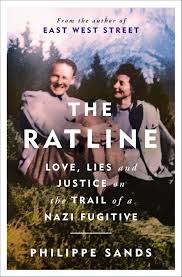 The Ratline traces the life of Otto von Wächter, an Austrian aristocrat who served as governor of the district of Kraków in Nazi-occupied Poland, then later, handpicked by Hitler, as governor of the district of Galicia, in present-day Ukraine. Wächter was complicit in myriad atrocities, including the virtual eradication of Galicia’s Jewish population; less than 3 per cent survived. Wächter also collected art, attended concerts and held elegant soirées with his wife, Charlotte. He played chess with Hans Frank, who was later hanged at Nuremberg for his central role in the Holocaust. He socialised with the Himmler family. The SS Reichsführer inscribed a book he gave to Wächter, ‘With my best wishes on your birthday – H Himmler, 8 July 1944’. Hitler welcomed Wächter’s initiative to form the Waffen-SS Galicia Division, and in 1944 the Führer granted his forty-something governor life tenure as a civil servant with full pension rights.
The Ratline traces the life of Otto von Wächter, an Austrian aristocrat who served as governor of the district of Kraków in Nazi-occupied Poland, then later, handpicked by Hitler, as governor of the district of Galicia, in present-day Ukraine. Wächter was complicit in myriad atrocities, including the virtual eradication of Galicia’s Jewish population; less than 3 per cent survived. Wächter also collected art, attended concerts and held elegant soirées with his wife, Charlotte. He played chess with Hans Frank, who was later hanged at Nuremberg for his central role in the Holocaust. He socialised with the Himmler family. The SS Reichsführer inscribed a book he gave to Wächter, ‘With my best wishes on your birthday – H Himmler, 8 July 1944’. Hitler welcomed Wächter’s initiative to form the Waffen-SS Galicia Division, and in 1944 the Führer granted his forty-something governor life tenure as a civil servant with full pension rights.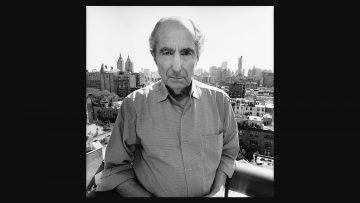 Delirious near the end
Delirious near the end The treatment was never going to work. Ryan Corcoran, an oncologist at Massachusetts General Hospital, Boston, didn’t realize this when he began treating his patient’s colorectal cancer in 2014. His team picked a therapy on the basis of genetic testing of a portion of the person’s cancer, and initially the treatment performed well. But before long, it faltered amid overwhelming tumour resistance. It was only when the person had a liquid biopsy, a test based on analysis of stray tumour DNA in the blood, that Corcoran learnt why the treatment the team had selected was doomed to failure. “There was a mutation known to cause resistance to that drug, which wasn’t present in the tissue biopsy but was fairly abundant in the blood sample,” he says. “If we had just biopsied a different lesion, we might’ve picked an entirely different therapy.” The experience demonstrated the benefits of searching the blood for answers. Now, blood-based biopsies are commonplace at his hospital, and are increasingly used in cancer centres around the world.
The treatment was never going to work. Ryan Corcoran, an oncologist at Massachusetts General Hospital, Boston, didn’t realize this when he began treating his patient’s colorectal cancer in 2014. His team picked a therapy on the basis of genetic testing of a portion of the person’s cancer, and initially the treatment performed well. But before long, it faltered amid overwhelming tumour resistance. It was only when the person had a liquid biopsy, a test based on analysis of stray tumour DNA in the blood, that Corcoran learnt why the treatment the team had selected was doomed to failure. “There was a mutation known to cause resistance to that drug, which wasn’t present in the tissue biopsy but was fairly abundant in the blood sample,” he says. “If we had just biopsied a different lesion, we might’ve picked an entirely different therapy.” The experience demonstrated the benefits of searching the blood for answers. Now, blood-based biopsies are commonplace at his hospital, and are increasingly used in cancer centres around the world. The past decade delivered powerful lessons of what not to do in an economic crisis. Many countries pursued, or had imposed on them, austerity policies. That is, cutting government spending when the economy tanks in order to balance the books. The idea is that with less spending now, taxes will be lower later on, which will make people feel more confident now, thereby shortening the recession. It’s a nice idea. But it actually makes things worse.
The past decade delivered powerful lessons of what not to do in an economic crisis. Many countries pursued, or had imposed on them, austerity policies. That is, cutting government spending when the economy tanks in order to balance the books. The idea is that with less spending now, taxes will be lower later on, which will make people feel more confident now, thereby shortening the recession. It’s a nice idea. But it actually makes things worse.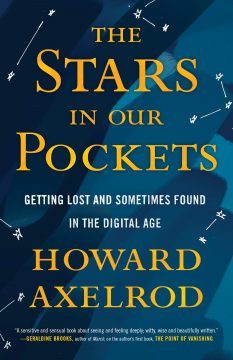 Books, like people, have their unique fates—their zodiac. Written in one context, they arrive in another, and every now and then a special convergence takes place. Like now. A book that in some other time would be read as a quiet reflection on the general state of things—how it is with us—delivers its messages with an unexpected force.
Books, like people, have their unique fates—their zodiac. Written in one context, they arrive in another, and every now and then a special convergence takes place. Like now. A book that in some other time would be read as a quiet reflection on the general state of things—how it is with us—delivers its messages with an unexpected force. The smallest works spoke volumes at “Theater of Operations,” MoMA PS1’s monumental art exhibition on the U.S. invasions of Iraq, which closed last month. In the immense Queens satellite of the name-brand New York institution, the comparatively miniature works of Iraqi artists offered a visual diary of life under siege. Glass cases of dafatir (notebooks, in Arabic) were spread around the exhibition halls. Produced by several artists, notably Dia Azzawi and Kareem Risan, some of the books were burnt or ripped; others were printed with Arabic calligraphy or capped with forms figurative or abstract; some expanded while others were painted shut, or were adorned with found objects—like barbed wire.
The smallest works spoke volumes at “Theater of Operations,” MoMA PS1’s monumental art exhibition on the U.S. invasions of Iraq, which closed last month. In the immense Queens satellite of the name-brand New York institution, the comparatively miniature works of Iraqi artists offered a visual diary of life under siege. Glass cases of dafatir (notebooks, in Arabic) were spread around the exhibition halls. Produced by several artists, notably Dia Azzawi and Kareem Risan, some of the books were burnt or ripped; others were printed with Arabic calligraphy or capped with forms figurative or abstract; some expanded while others were painted shut, or were adorned with found objects—like barbed wire.